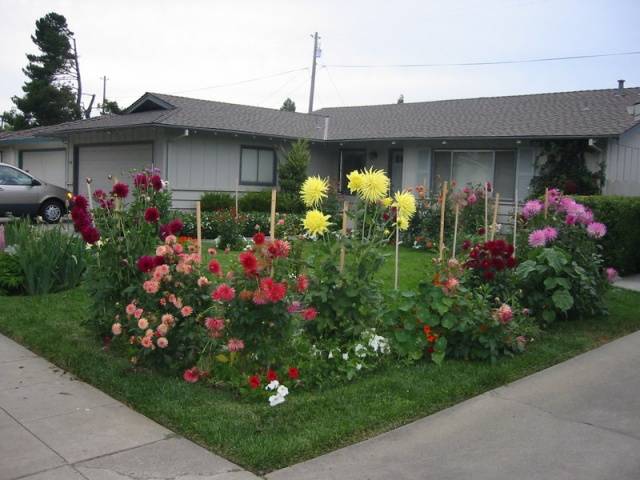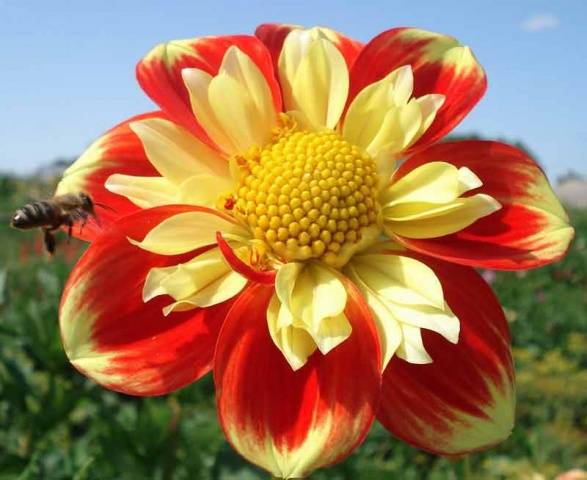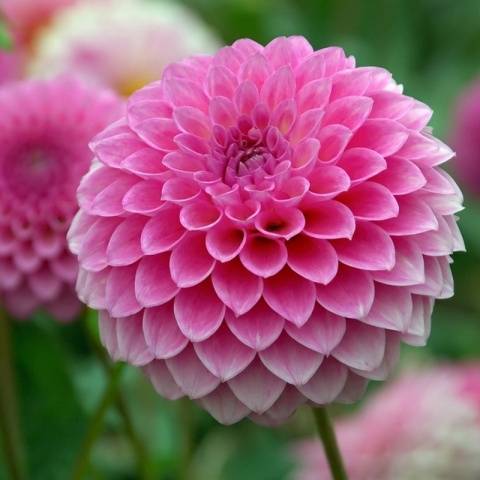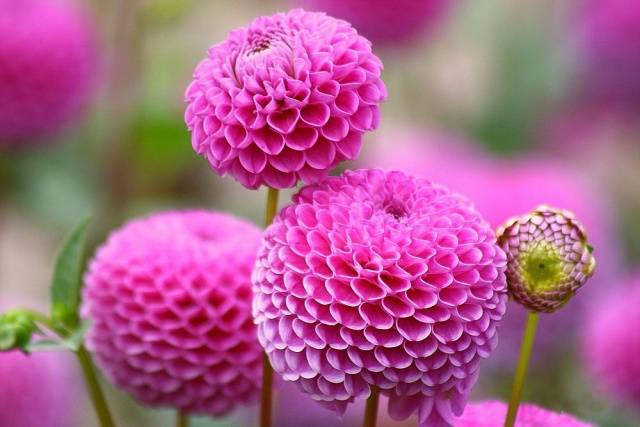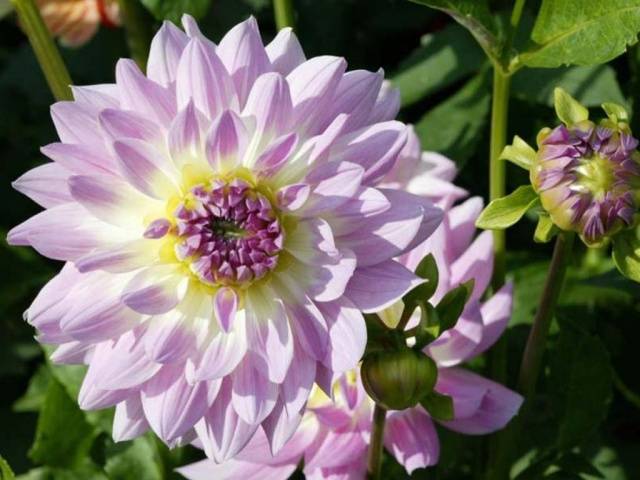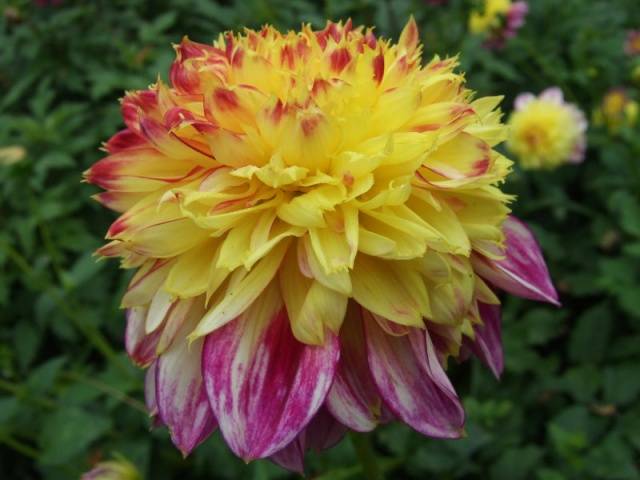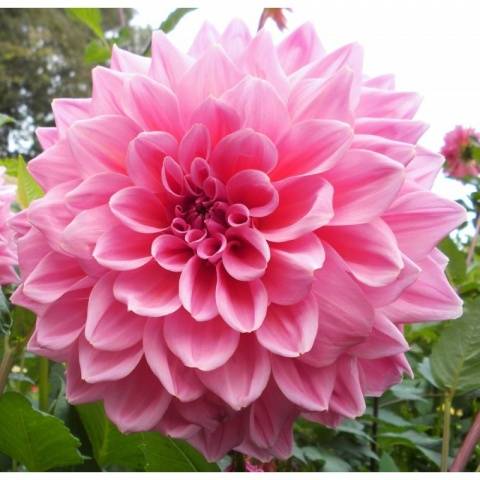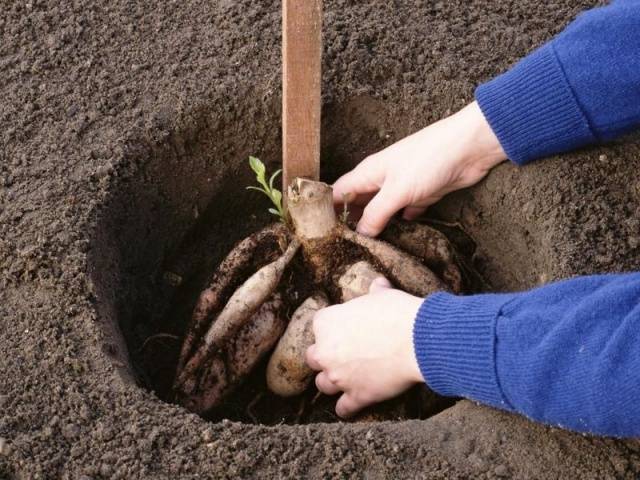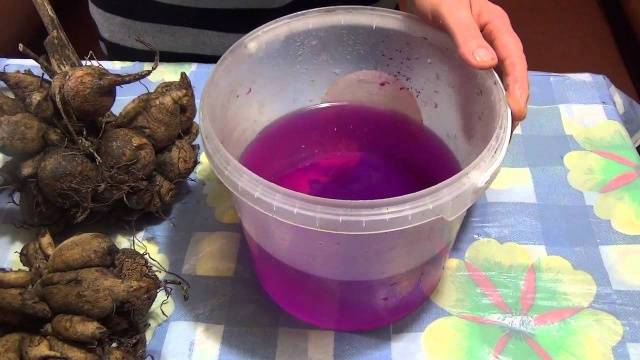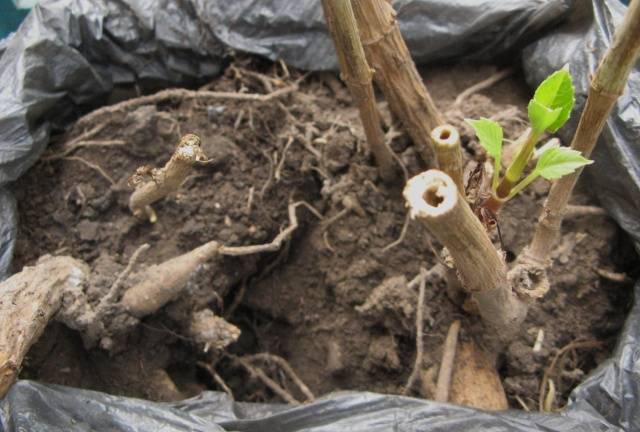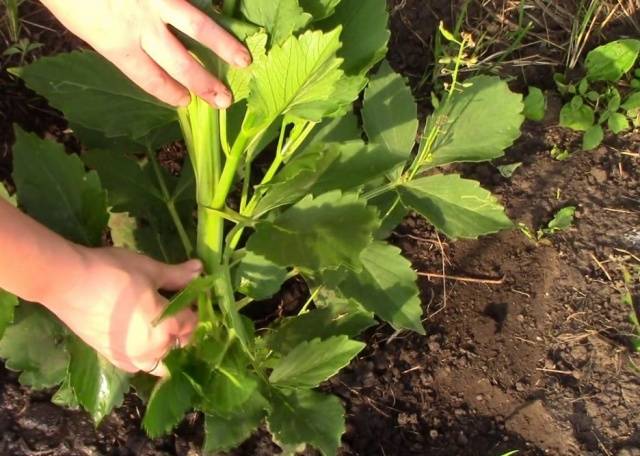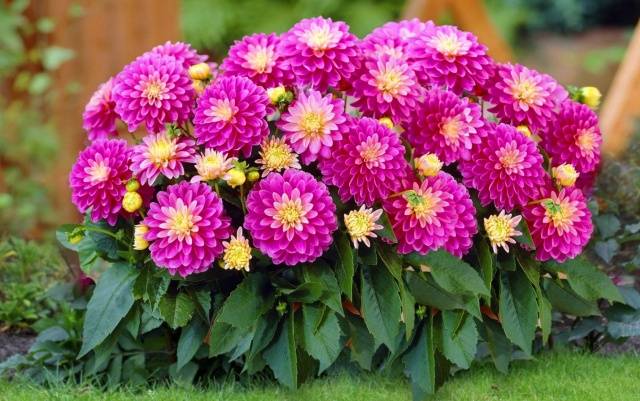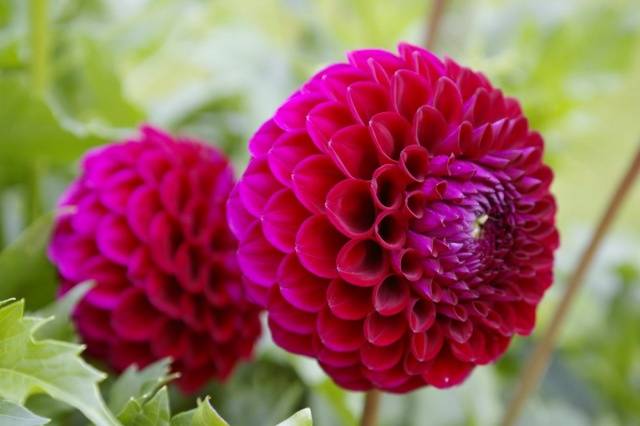Content
They were first introduced to Europe in the 18th century from Mexico. Today, these long-flowering plants from the Astrov family adorn the gardens of many flower growers. We are talking about dahlias or Dahlia. As a rule, perennial flowers are planted in the plots. This is due to the fact that they are unpretentious and take root well in the vastness of the Russian land. This article will discuss how and when to plant dahlias, and will also provide information about the assortment and the features of caring for them.
Plants bloom from mid-summer until frost. There are about 30 types of dahlias and about 15,000 varieties in the world. Your attention will also be provided with visual photos and instructive videos.
Main characteristics
Dahlias have simple leaves, sitting in pairs. Hollow stems can reach a height of 2–2.5 m. The plant has a well-developed root system. Perennials have tuberous, fleshy and thickened roots.
The aboveground part of plants annually dies off to the root collar in autumn. The stem can be smooth or rough, branched or straight. Most species and varieties have a feathery leaf type, however, there are plant species with pubescent leaves.
A distinctive feature of dahlias is the presence of inflorescences-baskets. The middle flowers are brown-red or golden-yellow, reed type.
Color classification
Thousands of varieties of dahlias are classified into several species. The shapes and colors of plants can be very different, which will allow you to create a real fairy tale on your site. You can plant tall plants or mini flowers.
Collar
This species is distinguished by the presence of petals of different sizes. In the middle, they are tubular and short, and on the outside they are flat and long.
Needle
They have thin petals, tightly twisted into a tube. The length of the petals may vary depending on the variety. The subspecies of needle-like plants is semi-needle-like. The petals of these colors resemble graceful cones.
Globular
Differs in round lush inflorescences, with fleshy, tubular and large petals.
Pompom dahlias
These are relatives of the spherical type of flowers. They have fluffy inflorescences with slightly twisted petals. but pompom dahlias smaller than spherical. Possess denser inflorescences.
Nymphae
Flowers have flat inflorescences, which is very different from other types of dahlias. The middle of the flower is fluffy due to tubular petals. The plant flower is edged with a row of flat and wide petals.
Anemoid
They resemble the collared look of dahlias. In the middle there are short tubular petals, and around them are flat and wide.
Peony
Flowers are distinguished by lush inflorescences, resembling peonies in appearance. Each inflorescence has several rows of oval petals, and in the center is a group of twisted, tubular, short petals.
Dahlias differ not only in shape, but also in color. Due to the accumulation of anthocyanin pigments in the plant, a new color appeared - red-black. Breeders aim to breed the blue dahlia. Although at this stage it is just a pipe dream.
Growing features
Due to the variety of varieties, colors and shapes of dahlias, they can be used for arranging flower beds, as well as border lines. They are also grown as salt and pot plants.
Generally speaking, the plants are unpretentious, although you should choose the right planting site for planting them. With proper watering and timely feeding, dahlias will delight your eye with lush flowering throughout the season. You can grow plants from seedlings, which must be purchased no earlier than mid-spring. Healthy tubers are strong and fleshy. Buy seedlings with short sprouts on tubers.
When to plant dahlias outdoors?
For abundant and long-lasting flowering, the dahlia should be planted in partial shade. Soil moisture should also be taken into account, since in a waterlogged environment, the tubers of plants will rot. Best of all, dahlias take root in drained soil - in black soil, loam or sandy soils.
How to prepare tubers
Prepare the tubers that you have left after winterfollows in April. First, they need to be cleaned of dried roots. Treat damaged areas with brilliant green. Planting is carried out in containers with nutritious soil or peat. In this form, dahlias should be stored at 18 ° C for two weeks. The tubers should protrude 2-3 cm above the surface.
After buds appear on the tubers, they need to be divided. Each division should have a bud with a root collar. Such delenki should remain in containers for some time. Before planting dahlias in open ground, remove the side shoots from them, which can reach a height of about 10 cm.
We suggest you watch interesting videos on how to prepare plant tubers for planting:
How to prepare the soil and plant tubers
In order for dahlias to be strong and healthy, the soil for planting them should be prepared in the fall. To do this, add compost and humus to the soil, after which the site is dug up. In the spring before landing sprinkle non-leafy mature compost and wood ash over the ground. Spread out this layer with a rake.
We suggest that you familiarize yourself with the instructions, from which you will learn how to plant dahlias correctly.
- The roots of the plant should be completely submerged in the holes. There should be room for fertilization in them.
- At the bottom of the holes, you need to pour a little rotted humus or manure, and then lightly cover it with earth so as not to burn the roots.
- Bury the tuber of the plant so that the shoot stays a few centimeters above the surface.
- After that, the seedlings should be watered and sprinkled with mulch (this can be peat mixed with sawdust or compost with bark).
- When planting tall plants, install the support immediately. This must be done immediately, since after a few months, you will not be able to drive a peg into the ground so as not to damage the root system. You can use several pegs for one seedling, which will allow you to fix even the most voluminous bush.
It has been noticed that growing dahlias from tubers is the most effective way of growing these plants outdoors.
Features of growing from seeds
To grow strong and beautiful dahlias from seeds, we suggest that you familiarize yourself with several features of this process:
- Soak the dahlia seeds in a light potassium permanganate solution. The water should be light pink in color. So, you will disinfect the seedlings.
- Sowing should be carried out in the last decade of February or early March.
- Arrange the plant seeds in a suitable container, lightly dust them with earth and cover with plastic or glass.
- In order for seedlings to appear as early as possible, maintain a certain temperature in the room, up to 15 ° C.
- After plant sprouting, remove the glass.
- Water the sprouts from a spray bottle to prevent the soil from drying out.
- Before 2-3 mature dahlia leaves appear, dive and transplant the plant into separate containers.
- Transplanting into open ground can be carried out in late May - early June.
How to properly grow and care for dahlias when sowing from seeds, you can learn more from the video:
Care features
Caring for dahlias involves mulching the site. So, you can get rid of the germination of grass, loosening the soil. In addition, mulch protects dahlias from pests such as slugs.
Since the tubers of plants can rot due to excess moisture in the ground, it is not necessary to water them abundantly during the dry period, only 1-2 times a week. To preserve moisture in extreme heat, hilling can be carried out after watering. Before watering, the soil is raked away from the stems, watering is carried out, and then the bush is huddled again.
Pinching process
Removing extra stems - this is pinching. Although planted dahlias are optional pinch... However, this activity promotes the development of strong stems and bulky buds. Leave 2-3 stems and remove the rest.
Re-pinching is necessary throughout the season, repeating as needed. Timely remove all sprouts appearing at the base of plant leaves.
Fertilization
In order for the planted plants to develop well, they need to be fed regularly. The frequency of fertilization is once every 2 weeks. At the same time, alternate organic matter with mineral fertilizers. As a top dressing, you can use ammonium nitrate in a proportion of 15 g per 1 m3... In addition, a 1 in 20 tincture of poultry droppings and a 1 in 10 mullein are suitable.
After the first buds appear, you need to feed the plants with potassium fertilizers and superphosphates in a proportion of 30 g of the drug per bucket of water. You need to water the bushes with this solution. The specified proportion is enough for 8 dahlia bushes.
You can learn about how dahlias are planted and care in the open field from the video:
How to use the support
Dahlias have hollow stems, as a result of which gusty winds and rain can break the bushes. Therefore, the plants need to be tied to supporting pegs, which, as mentioned earlier, are set in the ground at the stage of planting dahlias with tubers. The stem should be tied to a peg.
If a stem is broken on a plant bush, then a tire can be applied to it. To do this, attach a branch to the stalk of the dahlia, it is desirable that it be strong, secure it and support the stalk so that it does not tilt. If you provide timely care for dahlias, they will delight you with abundant flowering throughout the season. Usually, broken shoots of plants are restored when splints are applied.
Pest control
Slugs are the first enemies of the dahlia. The fact is that these pests love to feast on young and juicy plant stems. In addition, dahlia buds also suffer. They are struck by earwigs. To combat them, it is necessary to carry out timely processing of plants with decoctions of wormwood and celandine. The procedure should be carried out every 2 weeks and only in the evening.
Dahlias will bloom beautifully and for a long time if you take care of them even in the heat. So, to protect plants from aphids, caterpillars, ticks and thrips, they need to be sprayed with systemic insecticides. There are also popular ways of dealing with insects: spraying dahlia with soapy water.
There are also viral diseases of dahlia that do not respond to treatment. These include mosaic and spotted wilting. To avoid contamination of healthy plants, dig up the diseased dahlia and burn it with the tubers. Perhaps this is all that can be said about how to care for dahlias so that they can bloom all season.
In the fall, the tubers of the plants must be dug out of the ground again and folded for storage.This is due to the fact that the tubers cannot withstand frost.
Let's summarize
If you follow the recommendations outlined in the article, then your site will be full of beautiful flower arrangements of dahlias.
